Abstract
1 Chronic administration of ethanol to mice by inhalation induced tolerance to ethanol and produced an increase in the concentration of brain monoamines.
2 Withdrawal of ethanol from dependent mice caused behavioural changes associated with a further transient rise in brain monoamine concentrations which then declined to control levels.
3 Inhibition of the withdrawal syndrome by the administration of ethanol postponed the changes in monoamines associated with withdrawal.
4 Administration of inhibitors of catecholamine synthesis before withdrawal of ethanol modified the withdrawal syndrome.
Full text
PDF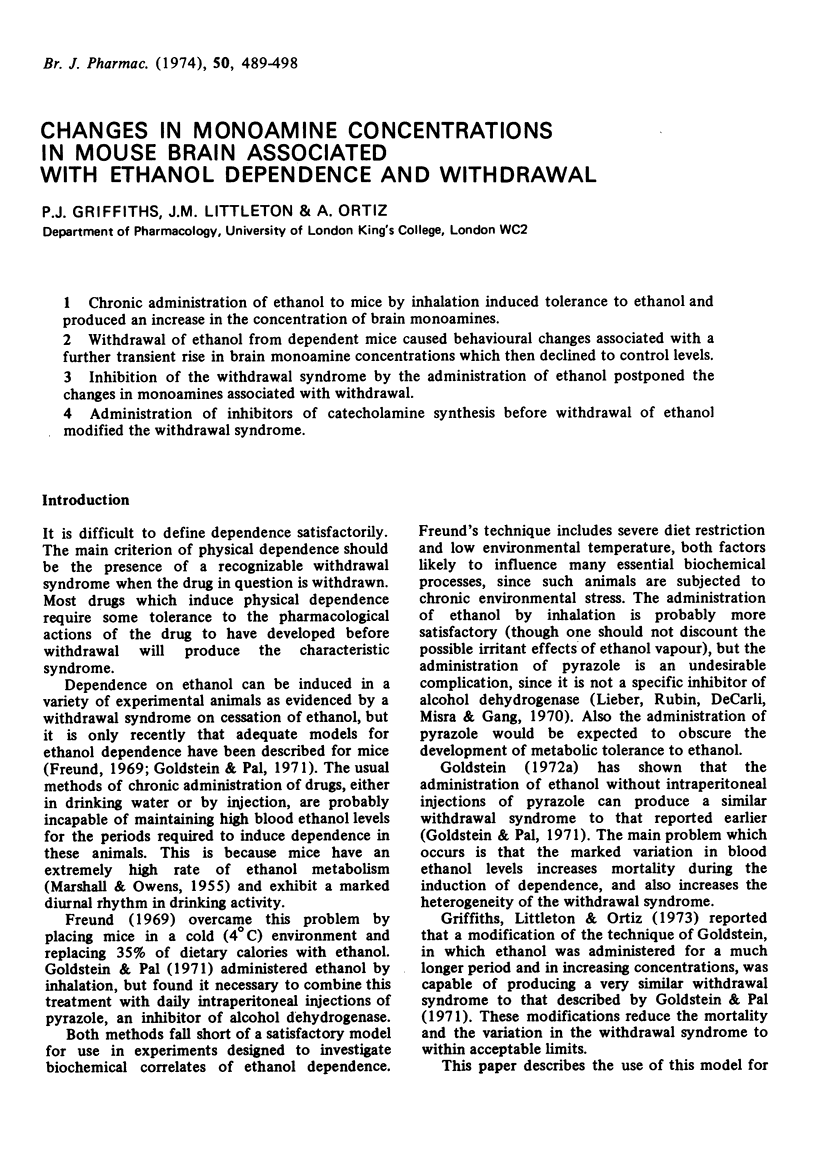
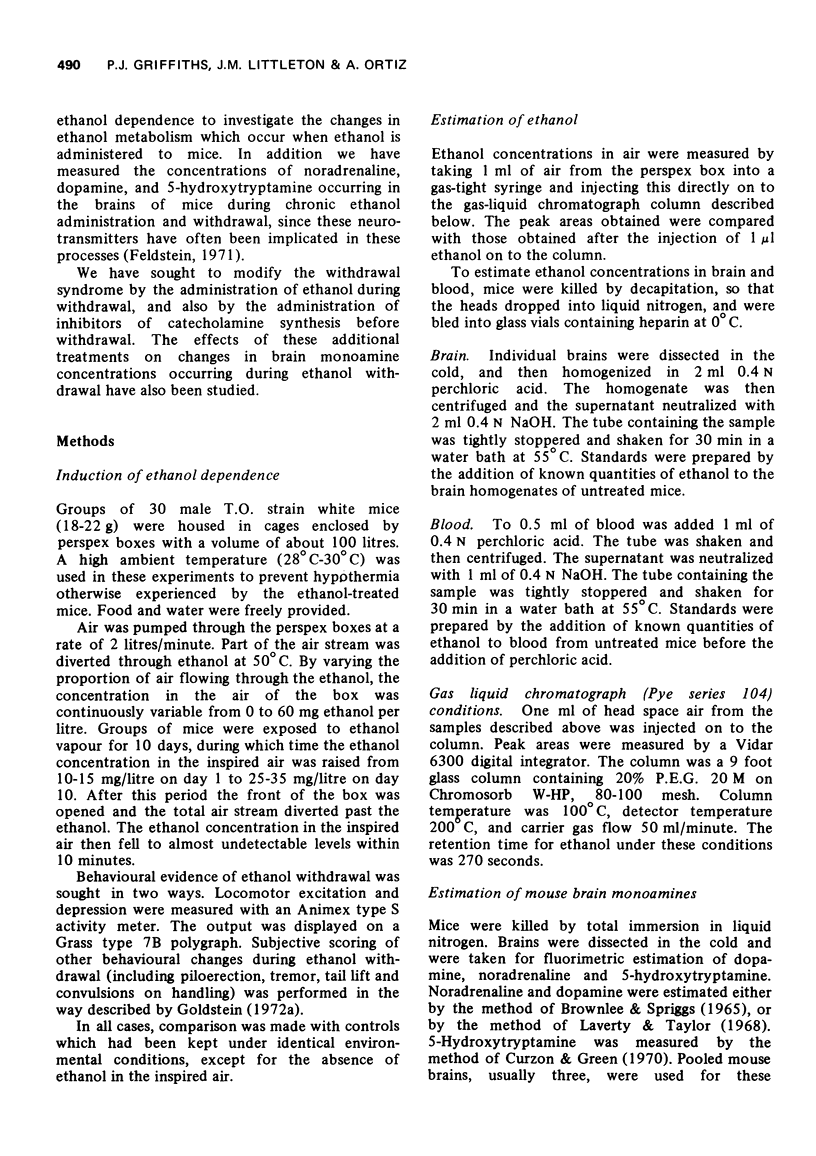
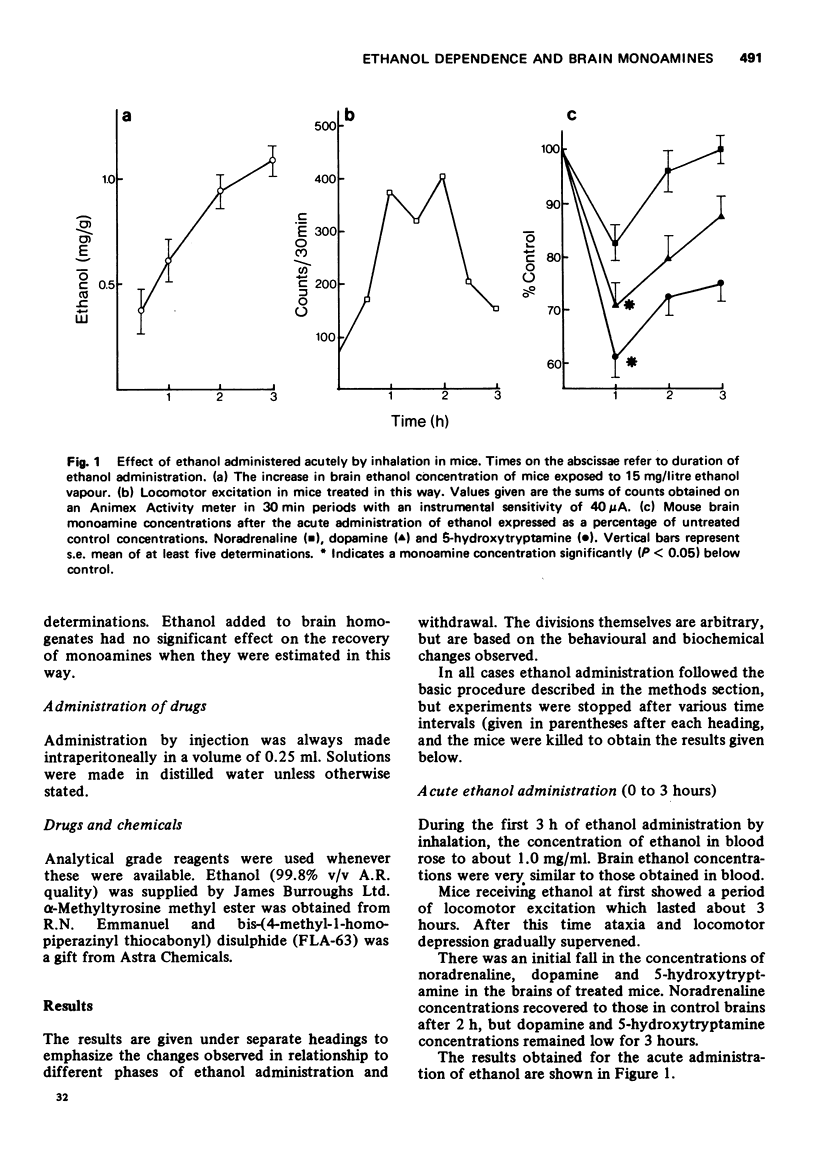
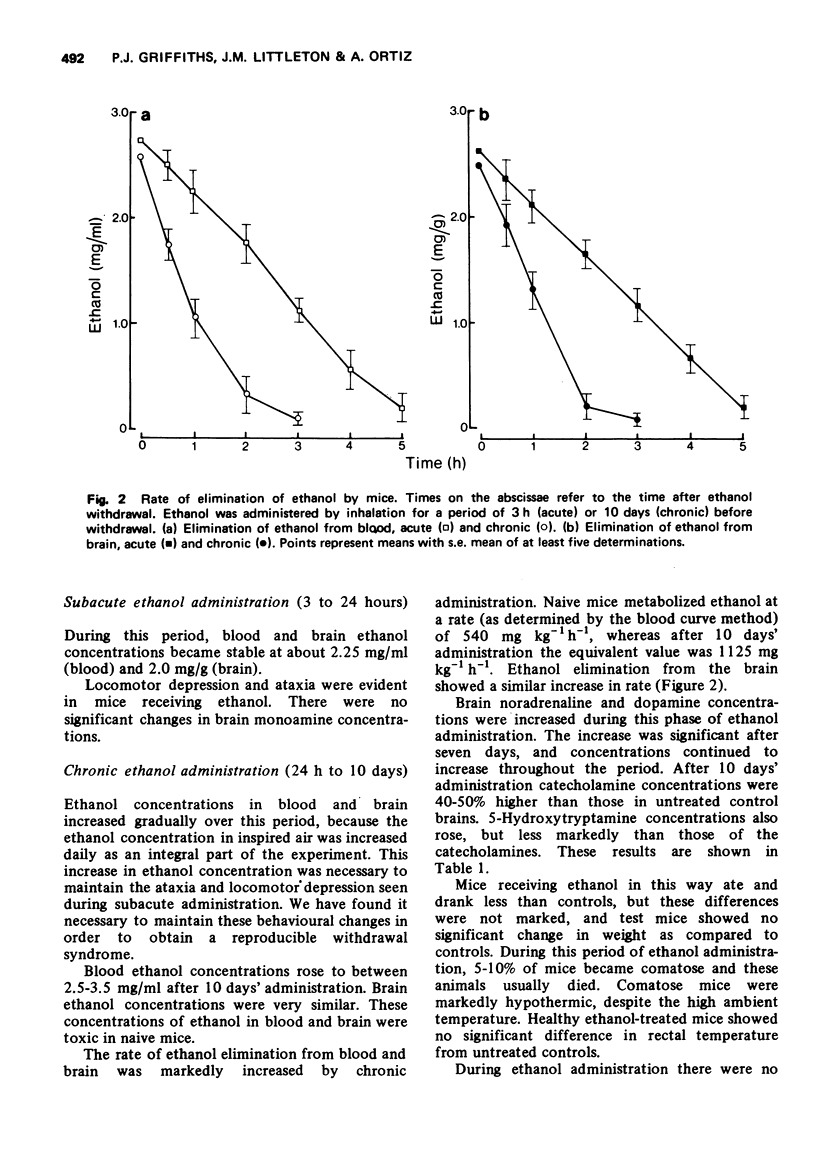
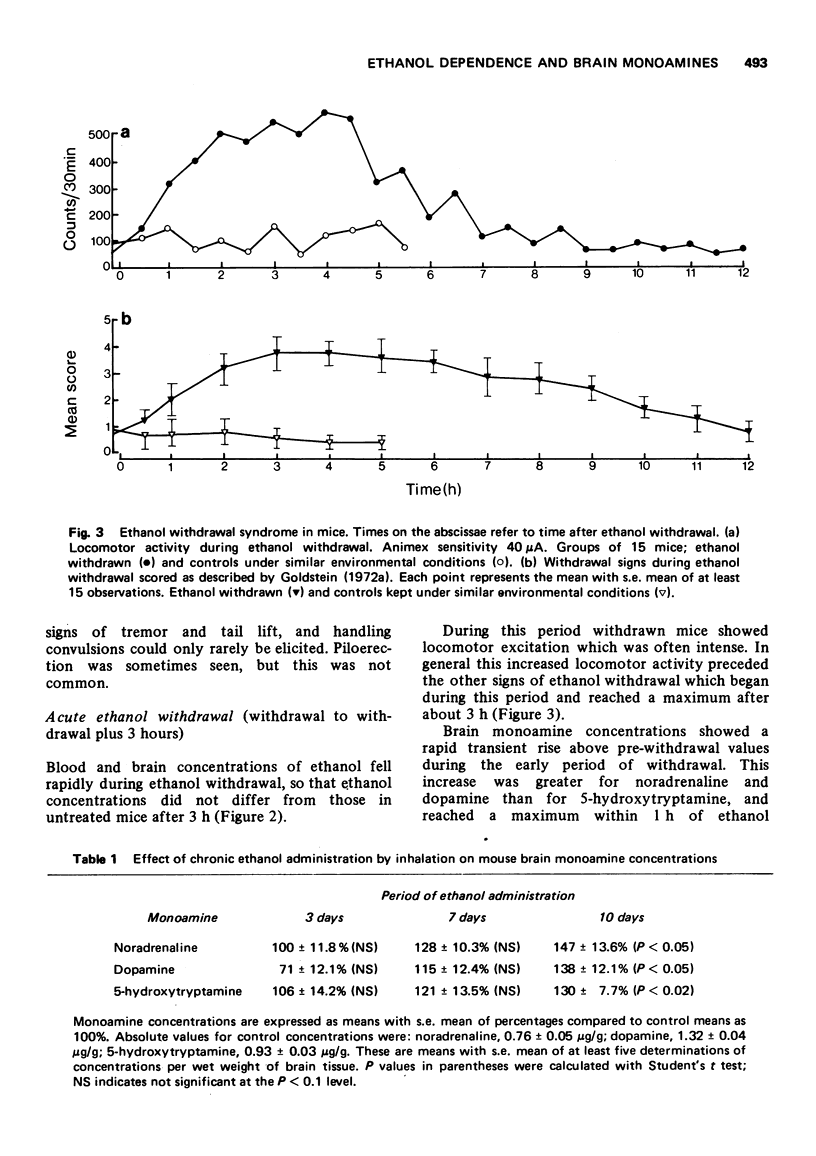
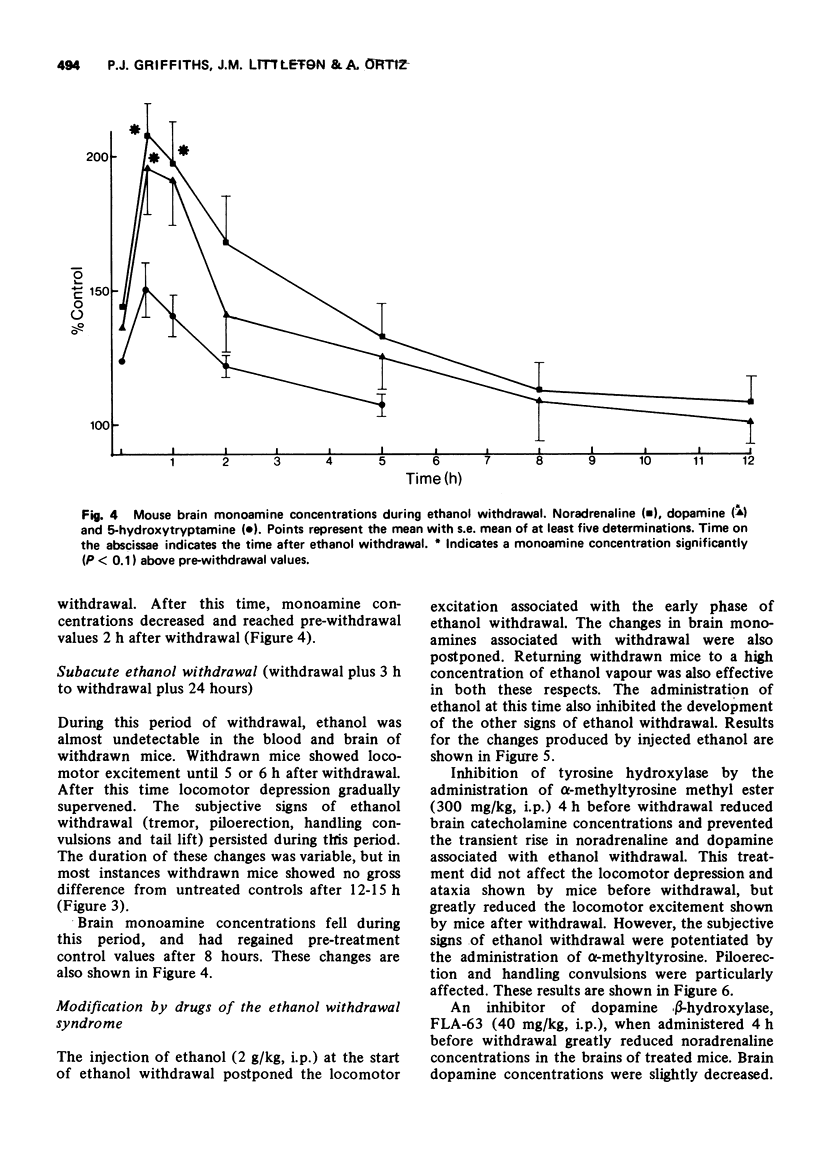
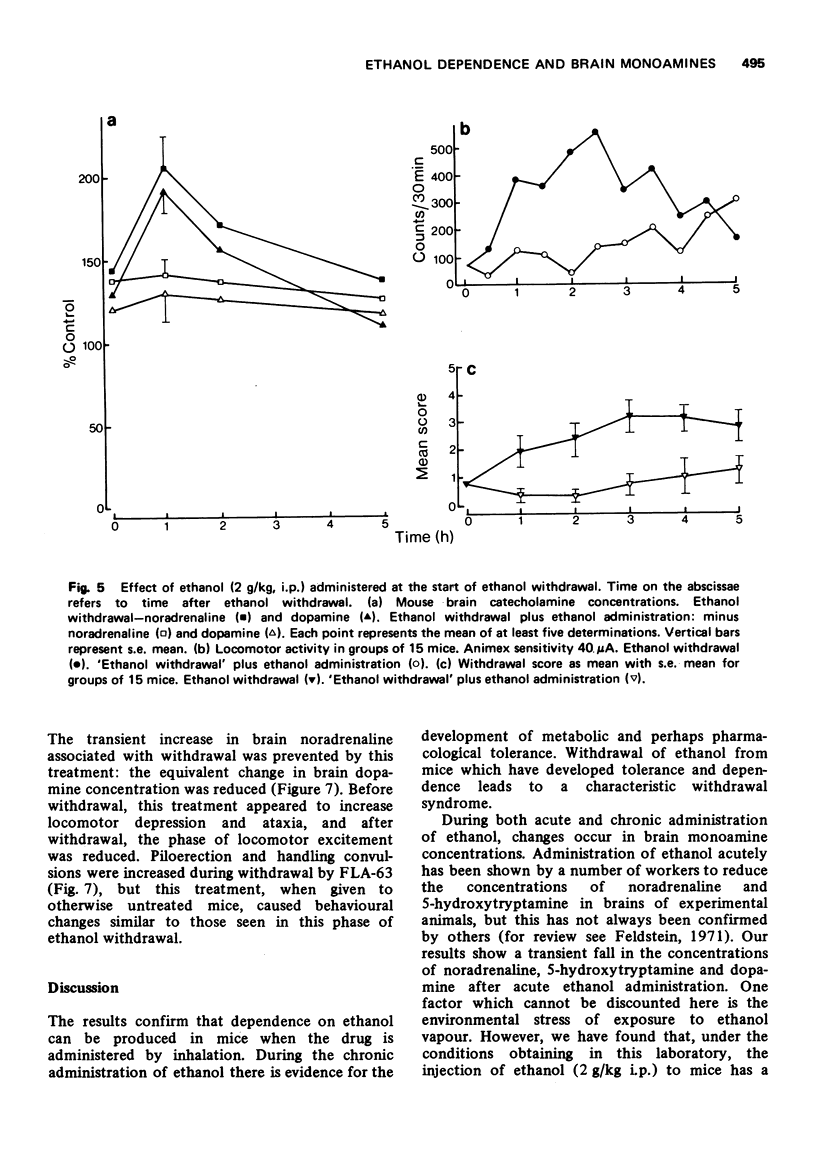
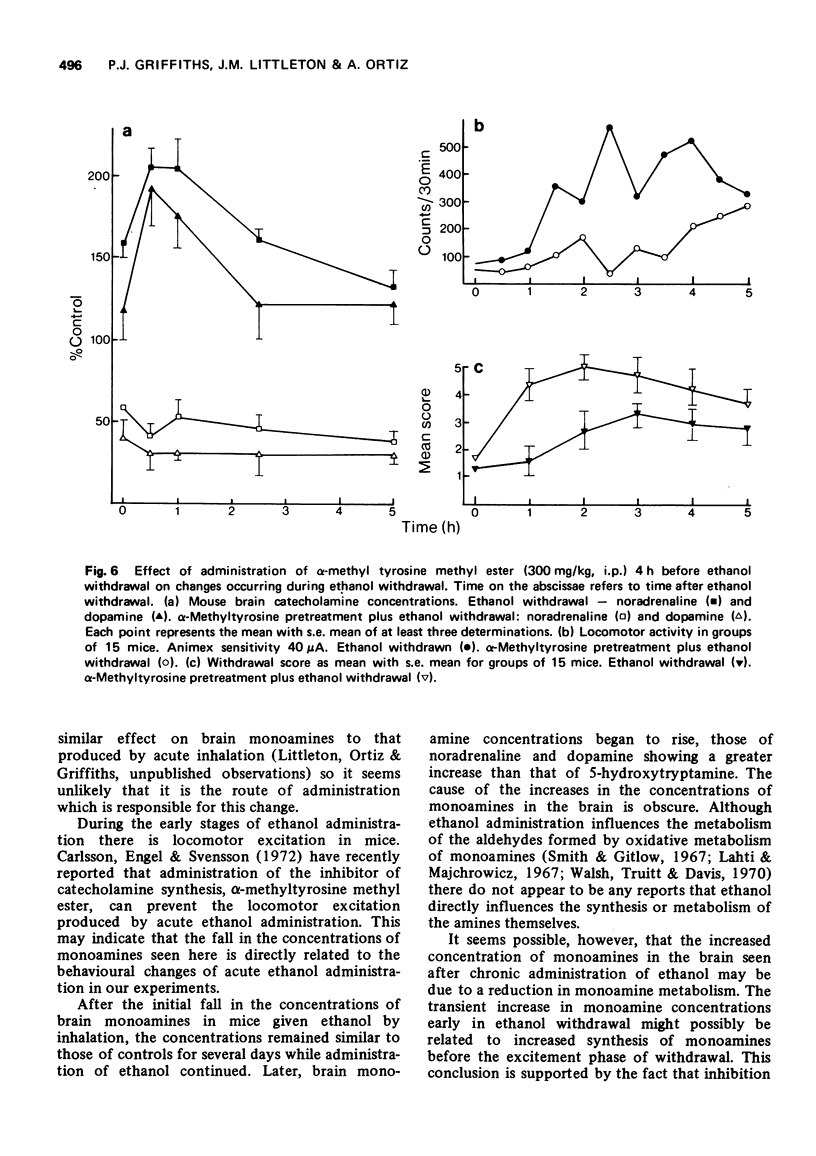
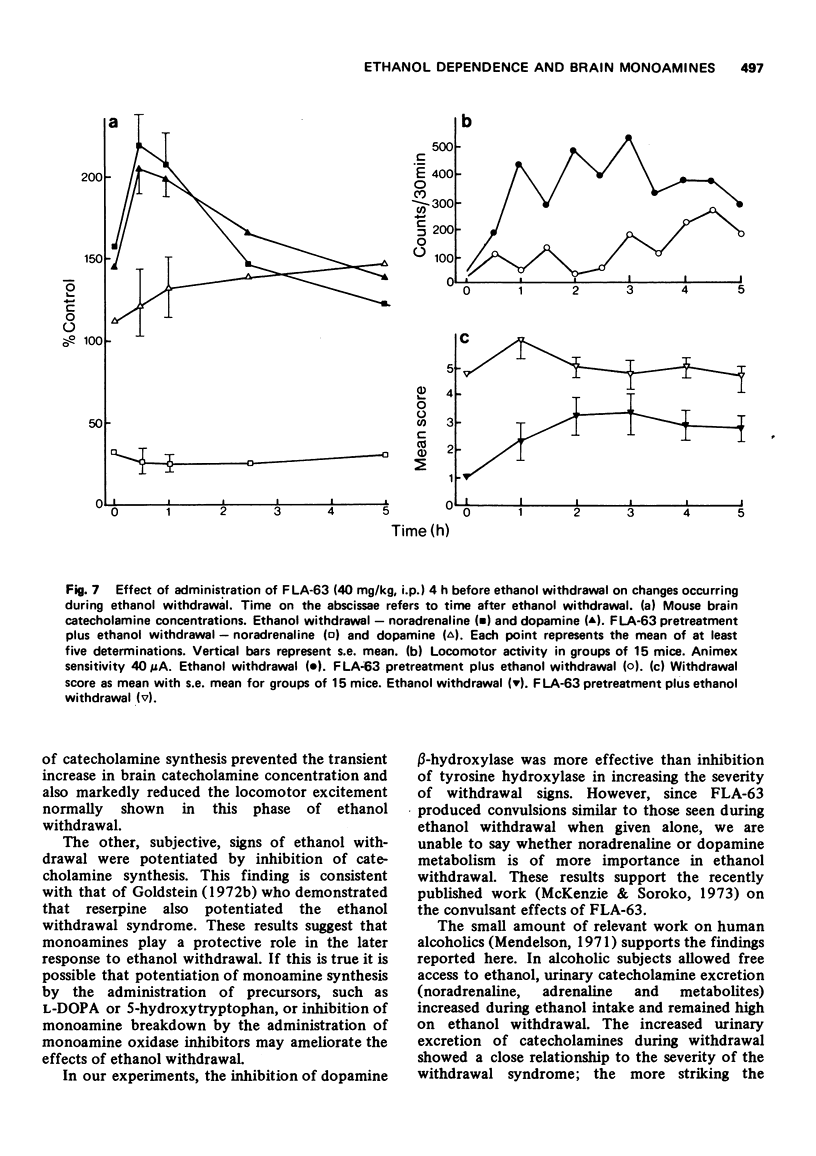
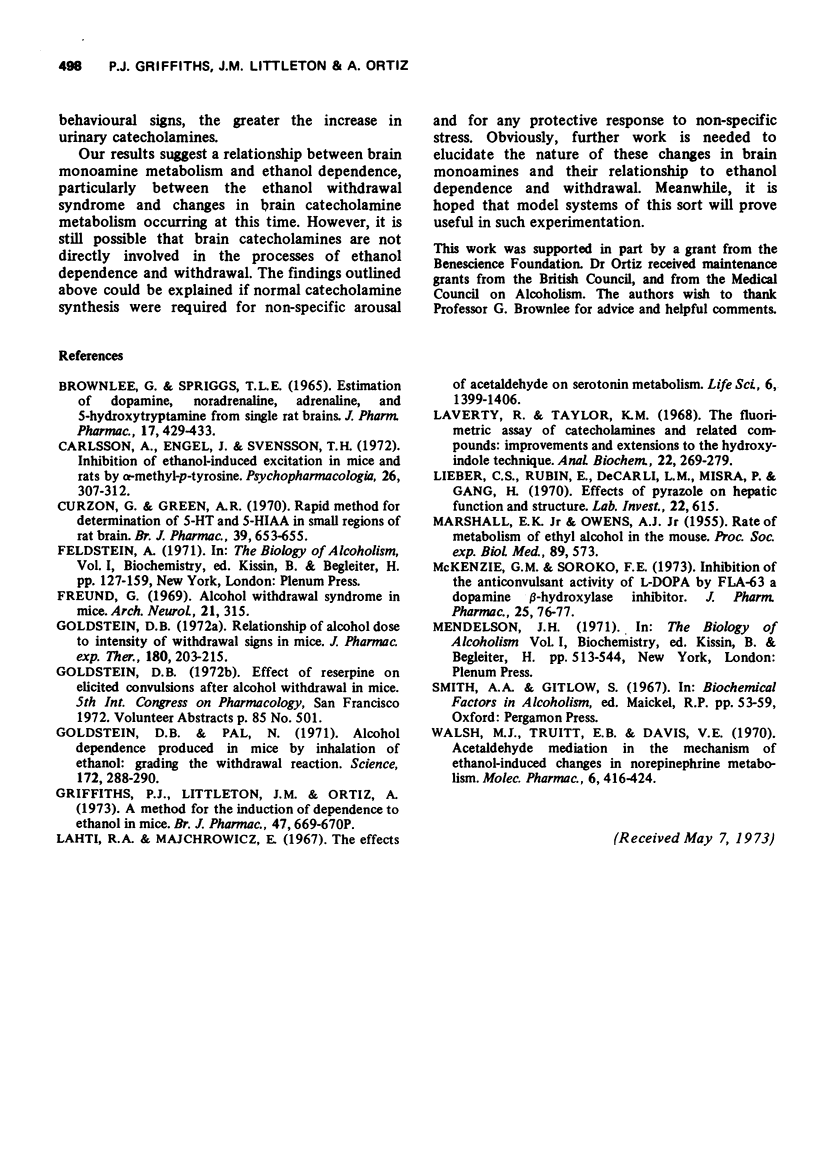
Selected References
These references are in PubMed. This may not be the complete list of references from this article.
- Brownlee G., Spriggs T. L. Estimation of dopamine, noradrenaline, adrenaline and hydroxytryptamine from single rat brains. J Pharm Pharmacol. 1965 Jul;17(7):429–433. doi: 10.1111/j.2042-7158.1965.tb07698.x. [DOI] [PubMed] [Google Scholar]
- Carlsson A., Engel J., Svensson T. H. Inhibition of ethanol-induced excitation in mice and rats by -methyl-p-tyrosine. Psychopharmacologia. 1972;26(3):307–312. doi: 10.1007/BF00422706. [DOI] [PubMed] [Google Scholar]
- Curzon G., Green A. R. Rapid method for the determination of 5-hydroxytryptamine and 5-hydroxyindoleacetic acid in small regions of rat brain. Br J Pharmacol. 1970 Jul;39(3):653–655. doi: 10.1111/j.1476-5381.1970.tb10373.x. [DOI] [PMC free article] [PubMed] [Google Scholar]
- Freund G. Alcohol withdrawal syndrome in mice. Arch Neurol. 1969 Sep;21(3):315–320. doi: 10.1001/archneur.1969.00480150105013. [DOI] [PubMed] [Google Scholar]
- Goldstein D. B., Pal N. Alcohol dependence produced in mice by inhalation of ethanol: grading the withdrawal reaction. Science. 1971 Apr 16;172(3980):288–290. doi: 10.1126/science.172.3980.288. [DOI] [PubMed] [Google Scholar]
- Goldstein D. B. Relationship of alcohol dose to intensity of withdrawal signs in mice. J Pharmacol Exp Ther. 1972 Feb;180(2):203–215. [PubMed] [Google Scholar]
- Griffiths P. J., Littleton J. M., Ortiz A. A method for the induction of dependence to ethanol in mice. Br J Pharmacol. 1973 Mar;47(3):669P–670P. [PMC free article] [PubMed] [Google Scholar]
- Lahti R. A., Majchrowicz E. The effects of acetaldehyde on serotonin metabolism. Life Sci. 1967 Jul 1;6(13):1399–1406. doi: 10.1016/0024-3205(67)90187-7. [DOI] [PubMed] [Google Scholar]
- Laverty R., Taylor K. M. The fluorometric assay of catecholamines and related compounds: improvements and extensions to the hydroxyindole technique. Anal Biochem. 1968 Feb;22(2):269–279. doi: 10.1016/0003-2697(68)90316-3. [DOI] [PubMed] [Google Scholar]
- Lieber C. S., Rubin E., DeCarli L. M., Misra P., Gang H. Effects of pyrazole on hepatic function and structure. Lab Invest. 1970 Jun;22(6):615–621. [PubMed] [Google Scholar]
- MARSHALL E. K., Jr, OWENS A. H., Jr Rate of metabolism of ethyl alcohol in the mouse. Proc Soc Exp Biol Med. 1955 Aug;89(4):573–576. doi: 10.3181/00379727-89-21879. [DOI] [PubMed] [Google Scholar]
- McKenzie G. M., Soroko F. E. Inhibition of the anticonvulsant activity of L-dopa by FLA-63, a dopamine- -hydroxylase inhibitor. J Pharm Pharmacol. 1973 Jan;25(1):76–77. doi: 10.1111/j.2042-7158.1973.tb09120.x. [DOI] [PubMed] [Google Scholar]
- Walsh M. J., Truitt E. B., Jr, Davis V. E. Acetaldehyde mediation in the mechanism of ethanol-induced changes in norepinephrine metabolism. Mol Pharmacol. 1970 Jul;6(4):416–424. [PubMed] [Google Scholar]


